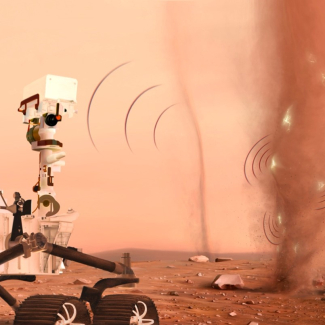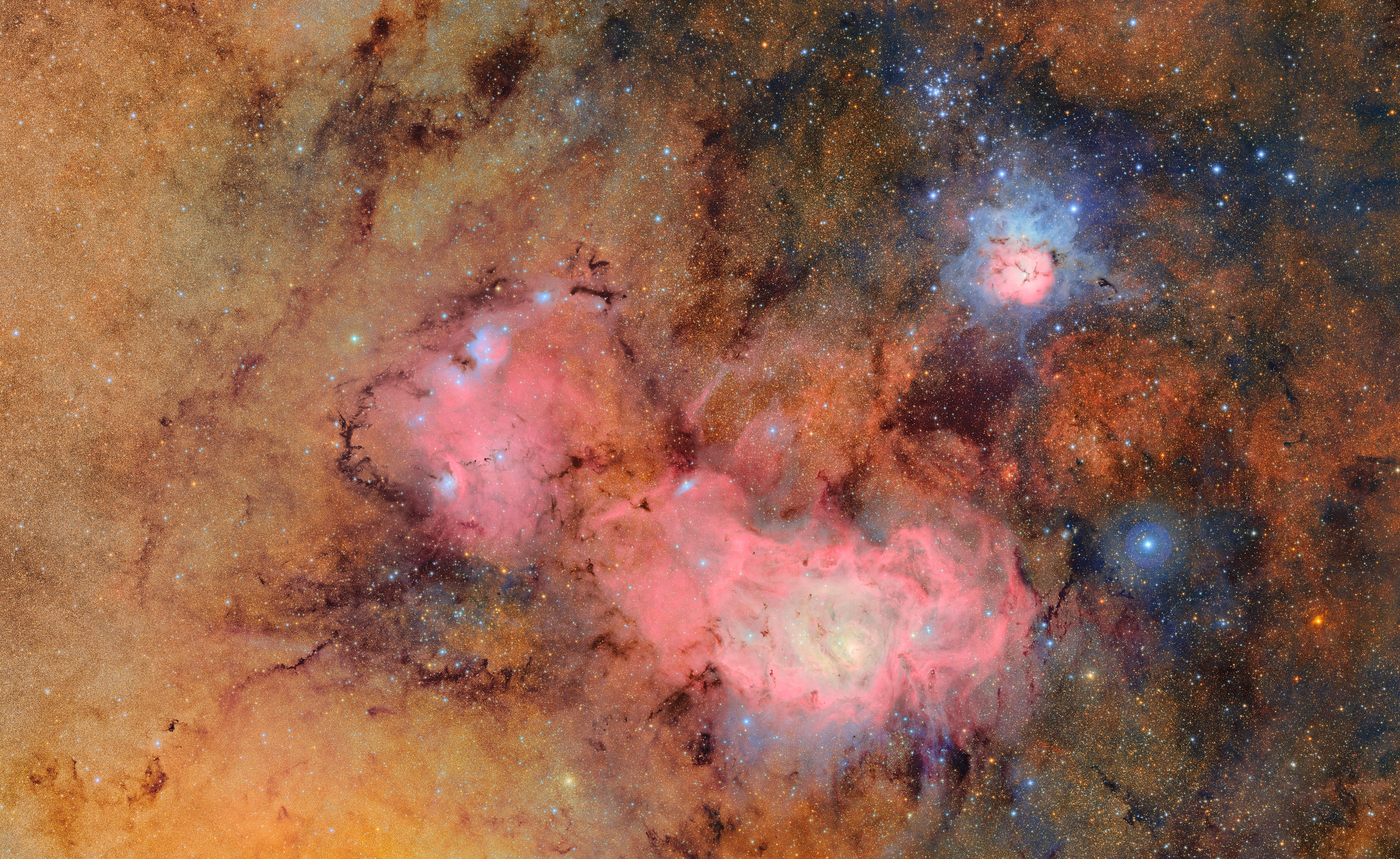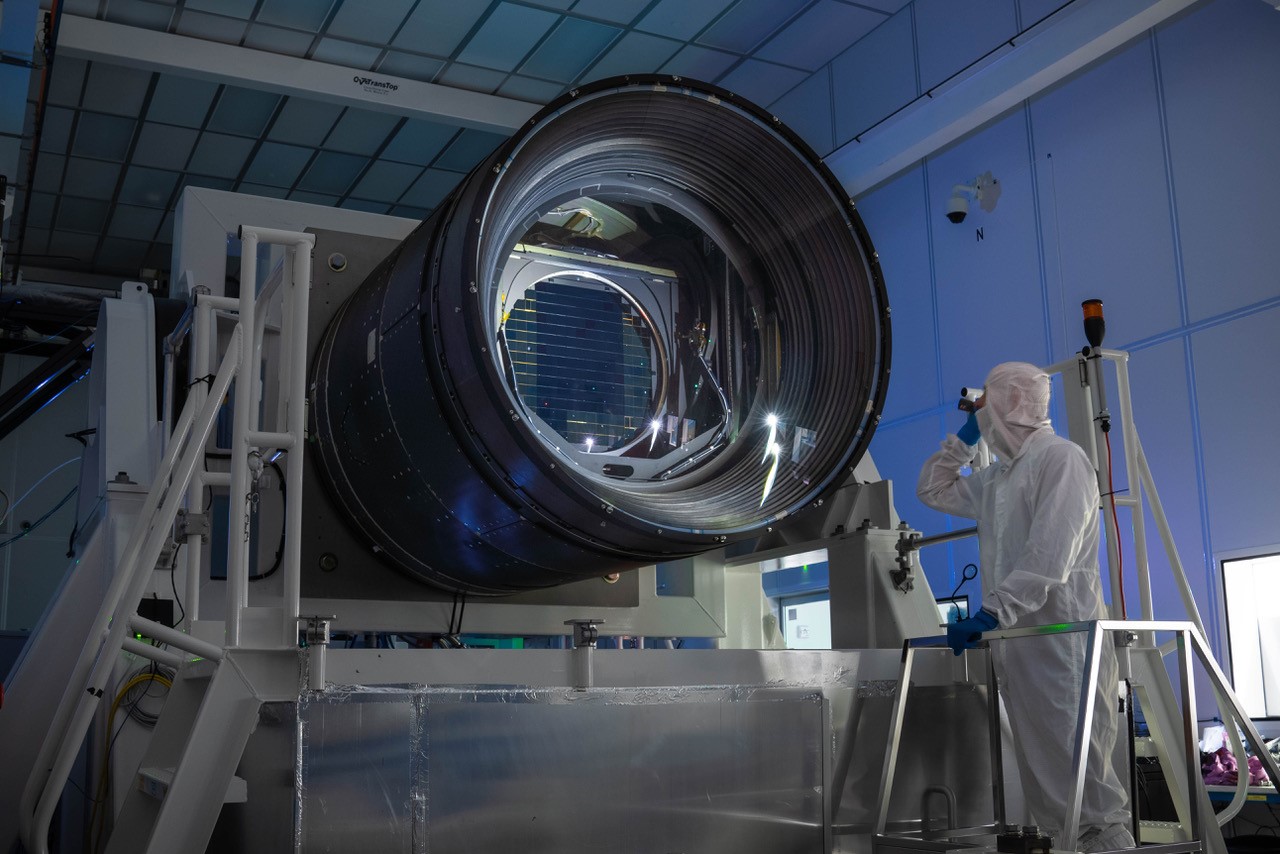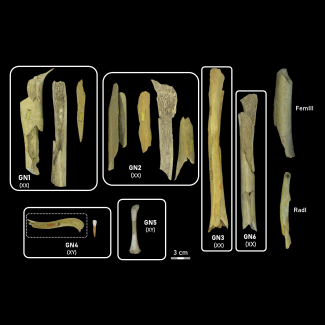
The Vera C. Rubin Observatory unveils the first images of the sky obtained with the world’s largest camera
The NSF-DOE Vera C. Rubin Observatory in Chile has unveiled the very first “mega” images of the cosmos obtained thanks to the extraordinary features and wide-field view of its LSST camera—the largest in the world. The camera took nearly two decades to build and involved hundreds of scientists across the globe, including a number of CNRS teams. The world-wide First Look unveiling event is held on 23 June at the National Academy of Sciences in Washington, D.C.
The impressive, car-sized Legacy Survey of Space and Time camera is like nothing seen before: thanks to its 3200-megapixel resolution and the wide field of view of the telescope at the Vera C. Rubin Observatory1 , the LSST camera can photograph 45 times the area of the full moon in the sky with each exposure. The high-definition images, which use six different colour filters, capture the entire southern night-sky in just three nights of shooting. One year after its journey from the United States to the Vera C. Rubin Observatory in Chile, the first “mega” images will be unveiled on 23 June at a press conference held at the National Academy of Sciences in Washington, D.C. This worldwide premiere is the culmination of 25 years of research and construction by international teams, including several research teams from CNRS2 .
The exceptional quality of these initial images show that the telescope is ready to start its mission: to scan the entire southern hemisphere sky by taking 1,000 high-definition photographs using six colour filters, every three nights for the next ten years. Studied end-to-end, these scans will provide a high-definition, four-dimensional film of the evolving processes of the Universe. The ten-year project will also generate unprecedentedly rich and profound views of the southern sky and reveal the faintest and furthest-away objects of the cosmos. For the first time on a large scale, this vast survey will reveal the slightest changes in the Universe, from nearby celestial phenomena, such as asteroids and comets, to very distant ones, like supernovae. The project paves the way for major advances in cosmology in dark matter and dark energy, as well as our understanding of our solar system.
CNRS: a key component of this international project
The project is funded by the U.S. Department of Energy and the U.S. National Science Foundation (NSF). The SLAC National Accelerator Laboratory built the Legacy Survey of Space and Time (LSST) camera. As historic partners, SLAC called on CNRS scientists to help build the focal plane of the camera and help design and build its robotic filter exchange system, which will automatically change the camera’s colour filters—each weighing 24-38 kgs—5-15 times per night. By measuring the quantity of light emitted by night-sky objects, and by converging the images taken through the different filters, it will make it possible to precisely determine their position and distance in relation to the Earth. Other CNRS scientists helped develop the computing infrastructure for the quantitative and qualitative data analysis of the gigantic trove of images that will be collected from the 17 billion observable stars and 20 billion observable galaxies. The goal of this painstaking effort is to create the most comprehensive catalogue of data on the universe.
Twenty terabytes of collected data will be stored every night. In France, the France Data Facility (IN2P3) (CNRS) in Lyon will store and process 40% of the collected raw image data. This data will be released to scientists around the world at regular intervals to foster groundbreaking discoveries and breakthroughs over the coming decades.
Why develop a ground-based telescope?
Even with 25 space telescopes currently in use, ground-based observation remains essential in documenting the Universe in its entirety. Larger and more sensitive, ground-based instruments produce higher-precision exposures as a result. These instruments also record larger volumes of data than space-based ones, as the remote downloading of data from the latter remains a complex process. Last but not least, ground-based telescopes can also be repaired and improved with increasingly efficient tools. With this state-of-the-art camera, the Vera C. Rubin Observatory is the latest addition to the fifty or so structures operating equipment and infrastructure to observe the universe from Earth and space.


To find out more about the LSST camera: The world's largest astronomical camera soon ready to scan the sky | CNRS
To find out more about the Vera C. Rubin Observatory: rubinobservatory.org
- 1Named after the American astronomer Vera C. Rubin, who was the first to establish the presence of dark matter in galaxies.
- 2From the IN2P3 Computing Centre (CNRS), the Marseille Particle Physics Centre (CNRS / Aix-Marseille Université), the Astroparticle and Cosmology Laboratory (CNRS / CEA / Université Paris Cité / Observatoire de Paris), the Annecy Laboratory of Particle Physics (CNRS / Université Savoie Mont-Blanc), the Clermont Auvergne Physics Laboratory (CNRS / Université Clermont Auvergne), the Subatomic Physics and Cosmology Laboratory (CNRS / Université Grenoble Alpes), the Nuclear Physics and High Energy Laboratory (CNRS / Sorbonne Université / Université Paris Cité), the Institute of Physics of the 2 Infinities in Lyon (CNRS / Université Claude Bernard Lyon 1), the Laboratory of the Physics of the 2 Infinities Irène Joliot-Curie (CNRS / Université Paris-Saclay / Université Paris-Cité), and the Montpellier Universe and Particles Laboratory (CNRS / Université de Montpellier).


